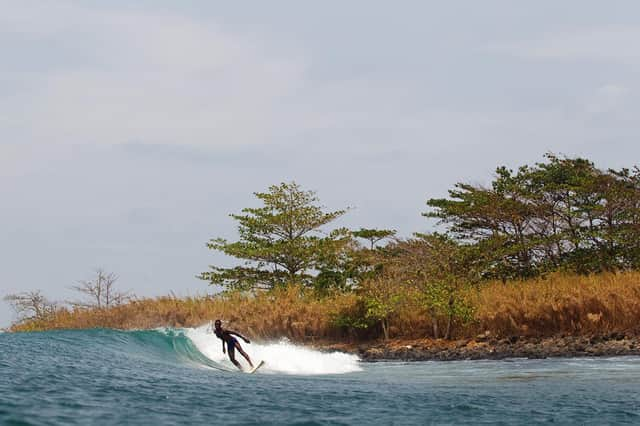Afrosurf: Africa's forgotten surfing history reclaimed in new book


While the rich surfing traditions of the Hawaiian islands have never been in doubt, and while it would be hard to argue that surfing in its current form didn't develop as outlined above, there was always that nagging thought: with all those perfect waves breaking in warm-water locations around the world for thousands of years, what are the chances that people from other cultures also had a go at riding waves for fun?
As long-suffering readers of this column will be aware, a couple of years ago Last Words did a little first-hand research into the claim that the Moche people of northern Peru came up with the idea of surfing much earlier than the Hawaiians, with archaeological remains suggesting they used reed surf craft called "caballitos de totora" from as early as 200CE. Thanks to a closing-down sale at the Eyemouth Maritime Museum, I was able to get my hands on a bargain basement caballito and try it out in small surf off the coast of East Lothian. Conclusion: the ancient Peruvians definitely developed themselves a bone fide wave-riding vehicle, but they probably weren't able to do much on their giant straw missiles other than hold on tight and head straight for the beach.
Advertisement
Hide AdAdvertisement
Hide AdIt turns out the Peruvians weren't the only ones to develop a form of waveriding pre-1778. Thanks to a new book called Afrosurf, a project instigated by Selema Masekela and the team at African surf brand Mami Wata and introduced by University of California history professor Kevin Dawson, the African chapter of the surfing story is now finally being told. Africa, Dawson writes in his intro, has “a 1,000-year-old surfing tradition,” the sport was "independently developed from Senegal to Angola," boards from three to five feet in length were ridden "in a prone, sitting, kneeling, or standing position" and the first known account of surfing on the continent was written during the 1640s in what is now Ghana.
According to Bruce Brown's iconic 1966 surf movie Endless Summer, when he, Robert August and Mike Hynson visited West Africa with their surfboards they "introduced" surfing to the locals. However, as Dawson points out, this claim is somewhat overdone. "If viewers shift their eyes away from August and Hynson," he writes," they will see Ga youth of Labadi Village, near Accra, Ghana, riding traditional surfboards, which can still be found at some beaches. The ability of Ga men, in the film, to stand on the Americans’ longboards illustrates their surfing tradition."
And speaking of longboards, it turns out that olde worlde Africans sometimes rode longboards, too, measuring around 12 feet in length, and used them to paddle long distances. The English anthropologist Robert Rattray (1881-1938) photographed paddleboards on Lake Bosumtwi, located about 100 miles inland of Cape Coast, Ghana, and explained that the Asante people used these craft because they believed the god Twi prohibited canoes on the lake. So the Africans didn't just figure out how to surf before Europeans, they also had their very own SUP craze hundreds of years before us.
Intriguingly, it seems African surfers may also have surfed off the east coast of what is now the continental USA long before the first white Americans ever took to the waves there. According to Dawson, "accounts indicate that, by the 1700s, enslaved Africans were surfing and surf-canoeing from South Carolina down to Brazil." That being the case, perhaps somebody should make some tweaks to the Wikipedia page on the history of surfing. As things stand, it claims that "surfing on the East Coast of the US began in Wrightsville Beach, North Carolina in 1909 when Burke Haywood Bridgers and a colony of surfers introduced surfing to the East Coast." It might also be worth re-examining the claim that Bridgers and friends were responsible for some of “the earliest appearances of surfboards in the Atlantic." If there's evidence that Africans were surfing in South Carolina in the 1700s, surely they should get a mention ahead of the white guys who came along and did the same thing a couple of hundred years later in the next-door state? As for the "earliest appearances of surfboards in the Atlantic" - well, if Africa really does have a 1,000 year-old surfing tradition, we're probably talking about a couple of fishermen riding homemade boards somewhere off West Africa at about the same time as Harold and William were gearing up for the Battle of Hastings.